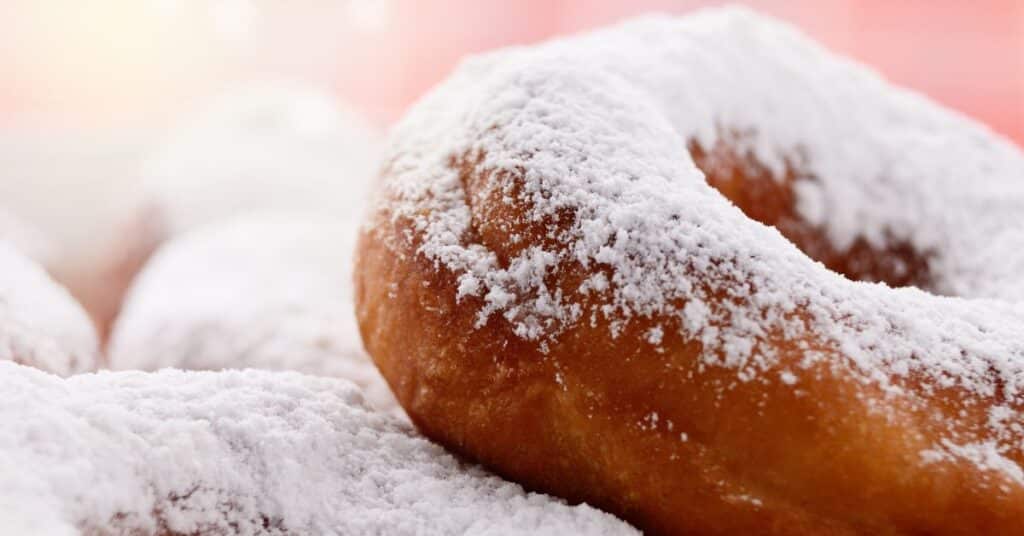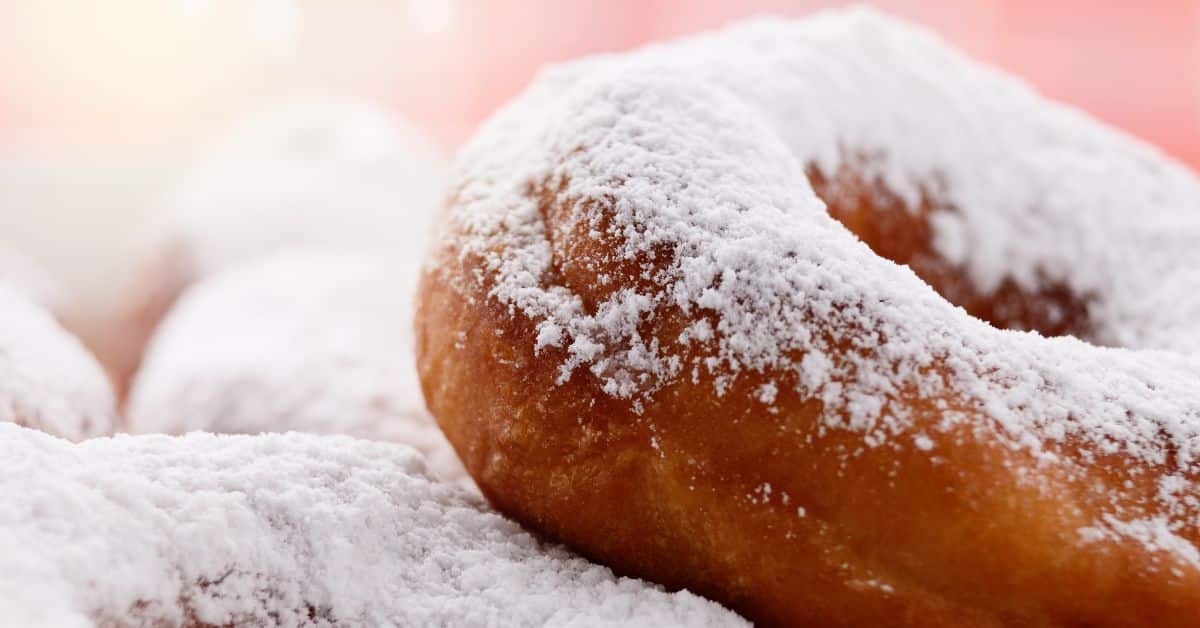
Sugar is a staple ingredient in most households, and powdered sugar is a must-have in every baker’s pantry. This finely ground sugar is versatile and can be used in various recipes, from frosting to sprinkling on top of desserts. However, what if you run out of powdered sugar or can’t find it in your local store? And what if you don’t have cornstarch available? Can you make powdered sugar without using cornstarch? Absolutely! So if you are wondering how to make powdered sugar without cornstarch? We have a few tricks for you.
Why use cornstarch when making powdered sugar?
Cornstarch may seem like an odd addition, but it serves an essential purpose. Cornstarch is more than an optional ingredient you can skip if you don’t have it on hand. It’s an important component responsible for powdered sugar’s texture and stability.
Powdered sugar is essentially granulated sugar ground into a fine powder. But if you grind granulated sugar in a blender or food processor, you’ll end up with a clumpy mess that doesn’t resemble powdered sugar. That’s where cornstarch comes in. Cornstarch is added to the granulated sugar before grinding to prevent clumping and improve the final product’s texture.
Cornstarch acts as an anti-caking agent by absorbing excess moisture in the powdered sugar. Without it, the powdered sugar would quickly clump together and become unusable. Cornstarch also gives powdered sugar a silky smooth texture and helps it flow more easily, making it ideal for dusting baked goods, frosting cakes, and making decorative sugar designs.
But cornstarch doesn’t just improve the texture of powdered sugar; it also extends its shelf life. The absorbent properties of cornstarch help to keep the powdered sugar dry and prevent it from clumping or becoming sticky over time. This means you can store powdered sugar for longer without worrying about it going bad or losing its quality.
Can you make powdered sugar without cornstarch?
Yes, you can make powdered sugar without cornstarch. Cornstarch is commonly added to commercial powdered sugar to prevent clumping, but it’s not necessary to achieve the same sweet, fine powder consistency. There are several alternative ingredients that you can use to make powdered sugar at home without cornstarch. With the right substitute ingredients and equipment, you can make homemade powdered sugar as fine and sweet as the store-bought variety without the added cornstarch.
Cornstarch substitutes
Here are several ingredients you can use as substitutes for cornstarch:
- Arrowroot powder: One of the most popular options is arrowroot powder, a natural starch extracted from the roots of arrowroot plants. Arrowroot powder works well as a thickener and stabilizer in powdered sugar, just like cornstarch. It has a neutral flavor and is an excellent option for those who want to avoid corn-based products.
- Tapioca starch: Another alternative to cornstarch is tapioca starch, a natural starch extracted from the cassava root. Tapioca starch can give your powdered sugar a slightly grainy texture, but it still works well as a substitute for cornstarch.
- Potato starch: It’s made by extracting the starch from potatoes and can be used as a thickener in various recipes. Potato starch has a neutral flavor and is an excellent option for those who want to avoid corn-based products.
- Rice Flour: Rice flour has a slightly sweet taste and is a great gluten-free option for those with dietary restrictions. However, it can result in a slightly gritty texture, so it’s essential to use fine-grain rice flour and sift it well before using it in powdered sugar.
Tips to Remember
Here are some tips to remember while making powdered sugar without cornstarch:
- Powdered sugar is made with granulated sugar, so choose a sweetener that can be powdered. You can use regular white, cane, or coconut sugar.
- You need to grind the granulated sugar into a fine powder to make powdered sugar. A food processor is an excellent tool for this job, as it can grind the sugar quickly and evenly.
- Once you have ground the sugar into a fine powder, it’s essential to sift it through a fine-mesh strainer to remove any larger particles. This will ensure that your powdered sugar is light and fluffy.
How to store powdered sugar
Here’s how to store powdered sugar without cornstarch:
- Transfer the powdered sugar to an airtight container. This helps prevent air from getting in and keeps the powdered sugar from absorbing any unwanted odors or moisture.
- If you want to keep powdered sugar from clumping or hardening, add a food-grade desiccant packet to the container. These packets help absorb moisture in the container and keep the powdered sugar fresh and dry.
How to Make Powdered Sugar Without Cornstarch

- Preparation time: 2 minutes
- Total Time: 2 minutes
- Servings: 1 cup
Ingredients
- 1 cup sugar, granulated
- 1 tbsp. Arrowroot powder or other starch of your choice
Instructions
- Add arrowroot powder and granulated sugar to a high-speed blender.
- Cover the blender with a lid and blend on high for about 30 seconds.
- Turn off the blender and let the powdered sugar settle for at least 2 minutes.
- Transfer the freshly made powdered sugar to an airtight storage container. Ensure the container is completely dry before adding the powdered sugar to avoid clumping or moisture.

How to Make Powdered Sugar Without Cornstarch
Ingredients
Method
- Add arrowroot powder and granulated sugar to a high-speed blender.
- Cover the blender with a lid and blend on high for about 30 seconds.
- Turn off the blender and let the powdered sugar settle for at least 2 minutes.
- Transfer the freshly made powdered sugar to an airtight storage container. Ensure the container is completely dry before adding the powdered sugar to avoid clumping or moisture.

